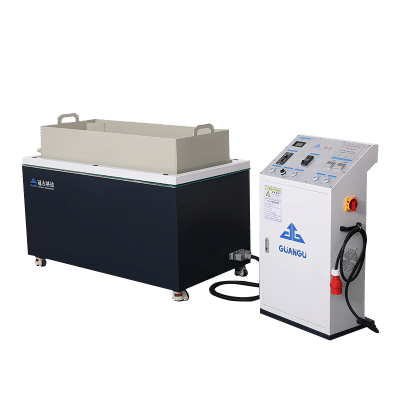The following factors need to be considered when choosing a suitable gold and silver polishing machine:
Function and performance: The gold and silver polishing machine should have the function and performance suitable for polishing gold and silver materials. It should be able to provide proper rotation speed and polishing pressure, and have the ability to adjust to meet different polishing needs.
Polishing method: Gold and silver polishing machines can adopt different polishing methods, such as rotating disc type, vibrating type or magnetic grinding type. Choose the polishing method that suits your needs, such as a rotating disc for larger flat areas or an oscillating for small parts.
Controls and Operation: The polisher should have features that are easy to operate and control, including speed adjustment, time setting, and ease of operation. The user interface should be simple and intuitive to provide options for easy manipulation and adjustment.
Durability and Quality: Choose a good quality gold and silver polisher with a durable design and materials. It should be able to withstand prolonged and frequent use with stable and reliable performance.
Safety: Gold and silver polishing machines should have necessary safety functions and protection measures, such as emergency stop devices, protective covers and circuit protection. This ensures that you remain safe during operation.
Brand and word of mouth: Choose a gold and silver polisher from a reputable brand, which usually means better quality and customer support. Brand reputation can be assessed by reading product reviews and getting feedback from other users.
The final choice should be determined based on your specific needs and budget. It is recommended to compare different brands and models of gold and silver polishers before purchasing, taking into account the above factors, and choose the polisher that best meets your needs.
If your aluminum parts are showing scratches after scratching, here are some things you can try to remove them:
Clean the Surface: Use warm water and a mild soap to clean the surface of the aluminum part to remove surface dirt and impurities. Dry gently.
Grinding: For minor scratches, you can use sandpaper or an abrasive cloth. Choose a finer sandpaper (such as 400 to 800 grit) and grind lightly in the direction of the scratch. Maintain even pressure and movement until the scratch lessens or disappears.
Polish: For deeper or more stubborn scratches, try an aluminum polish. Apply an appropriate amount of polish to the scratch and polish with a soft cloth or polishing pad. Follow product directions, moving the cloth or pad evenly until scratches lessen or disappear.
Metal polish: For more severe scratches, consider a metal polish. Choose a metal polish suitable for aluminum and follow the product directions. Using a soft cloth or polishing pad, apply the polish evenly to the scratches and polish until the scratches are reduced or disappear.










You must be logged in to post a comment.